

PARAGUAY, 2002, Ilex paraguariensis, yerba maté or Jesuit tea, Scott 2699
NORTH VIETNAM, 1963, Chenopodium ambrosioides, epazote or Jesuit's tea, Scott 283
JESUIT
PLANTS |


PARAGUAY, 2002, Ilex
paraguariensis, yerba maté or Jesuit tea, Scott 2699
NORTH VIETNAM, 1963, Chenopodium
ambrosioides, epazote or Jesuit's tea, Scott 283
There are two plants known as Jesuit tea or Jesuit's tea. The lesser-known Chenopodium ambrosioides, epazote or Jesuit's tea appears only on one stamp (see above); its Mexican origin or association with missionary orders gave rise to names like the Spanish té de los Jesuitas or the German Jesuitentee. Ilex paraguariensis, yerba maté or Jesuit tea is very well-known in South America, where the leaves are used to prepare the popular stimulating drink called yerba maté or maté. For many years the tea had been banned as pernicious, even under pain of excommunication, but eventually the ban was lifted. Jesuits recognized its energizing properties. When food was short, natives could subsist on maté and smaller quantities of food. So the Jesuits cultivated it and prepared a beverage that would later be known as Jesuit tea or "the elixir of the Jesuits." They may have gotten into the production of maté on their reductions to save the natives from the more destructive epidemic of alcoholism.

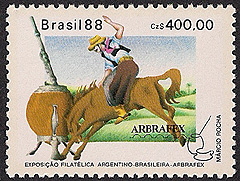
ARGENTINA, 1956, the herb with its traditionally associated vessel and
straw, Scott 656
BRAZIL, 1988, ABRAFEX Philatelic Exhibition, features the herb's vessel
and straw, Scott 2156
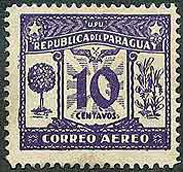



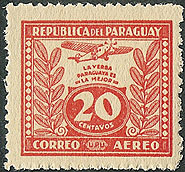
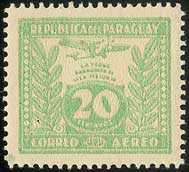
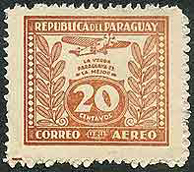

PARAGUAY, 1931-36, orange tree and maté, Scott C60-C63; maté
on both sides, Scott C64-C67
some items also exist imperf, Scott C67a

ARGENTINA, 2008, botanist Aimé Bonpland with the leaf of Ilex
paraguariensis (left) and the female flower (right), Scott 2483
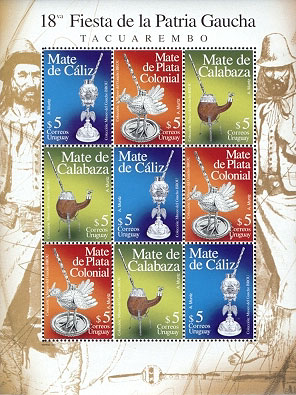
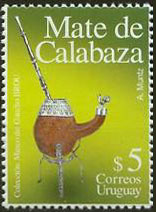
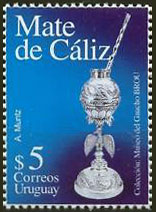
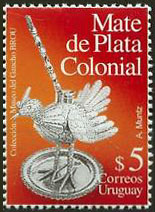
URUGUAY, 2004, traditional vessels for yerba maté, Scott 2065

URUGUAY, 1967, soldier with traditional yerba maté vessel, Scott
C311
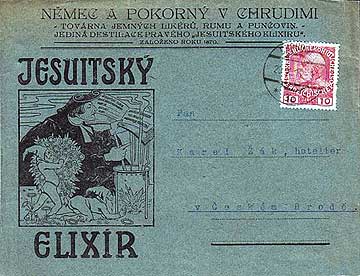
This 1911 cover from Chudrim, Bohemia, then part of Austria-Hungary, carries
an ad for the elixir of the Jesuits,
being brewed from yerba maté by a strangely-dressed Jesuit and two elves.
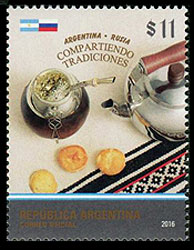
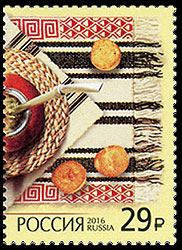
ARGENTINA and RUSSIA, 2016 joint issue about common traditions: tea and yerba maté



COLOMBIA, 1982, the bicentenary of the Royal Spanish Botanical Exhibition,
Scott 923, 925, C739
featuring 3 varieties of Cinchona or Jesuit Bark: C. lancefolia, C. cordiflora, C. ovaliflora



REPUBLIC OF THE CONGO, 1963, Cinchona ledgeriana, Scott 444, 446, 448
Around 1630 Spanish Jesuits in South America learned of the healing powers of the cinchona tree. Its bark cured malaria and reduced other fevers as well. Prejudice against the Jesuits and the drug they brought back to Europe kept Protestant Europeans, however, distrusted the Jesuits and thought the bark was a plot to kill them, so many continued to die from malaria until 1681. Two French scientists, Pierre Joseph Pelletier and Joseph Caventou, later identified the exact substance in the bark that was curative, an alkaloid called quinine from the native word for bark. Other alkaloids with curative powers have since been isolated. Other plants are also known as Jesuit's Bark: Iva frutescens, Iva frutescens oraria, Iva oraria.



CUBA, 1962, Scott 759
RIO MUNI, 1960 and 1964, Scott 10, 30
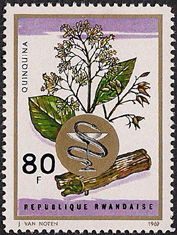

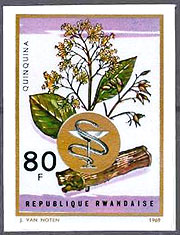
RWANDA, 1969, Scott 537 perf and imperf.
RWANDA, 1970, Scott 367
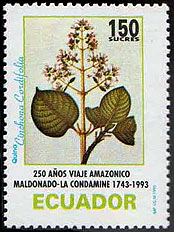

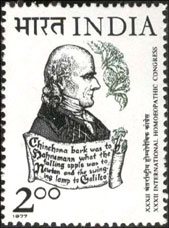
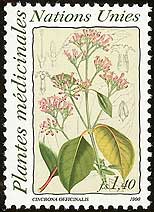
ECUADOR, 1993, Cinchona cordifolia, Scott 1320
POLAND, 1962, Scott 1089
INDIA, 1977, XXXII International Homeopathic Congress, Scott 767
shows Dr. Samuel Hahnemann and "cinchona"
UNITED NATIONS (Geneva), 1990, Scott 187
Jesuits' Nuts
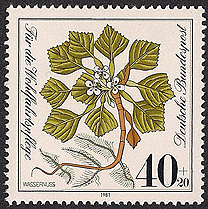


GERMANY, 1981, Scott B589; LATVIA, 2002, Scott 551; LITHUANIA, 2005, Scott 798b; POLAND, 2006, Scott 3815Jesuits' nuts (Trapa natans), also known as Jesuit nuts, Jesuit's nuts, water chestnuts, or water caltrops, are indigenous throughout southern Europe and eastward into China. The species contains a single large seed with a sweet and edible embryo which abounds in starch. These seeds are ground and made into bread in parts of the south of Europe. When the Jesuits introduced the rosary in China, they made them from the seeds of an aquatic plant known as water caltrops, often mistaken for the water chestnut. Because of the use of these seeds in rosaries, they became known as Jesuits' nuts. Jesuits' nuts are used as an ingredient in many elaborate oriental recipes. Fresh Jesuit's nuts are available in September in areas with large oriental populations such as Hawaii and California. Oriental and specialty food stores carry boiled Jesuits' nuts year round in cans or jars, usually in a honey or sugar syrup.